Medication, exercise and diet changes can all help
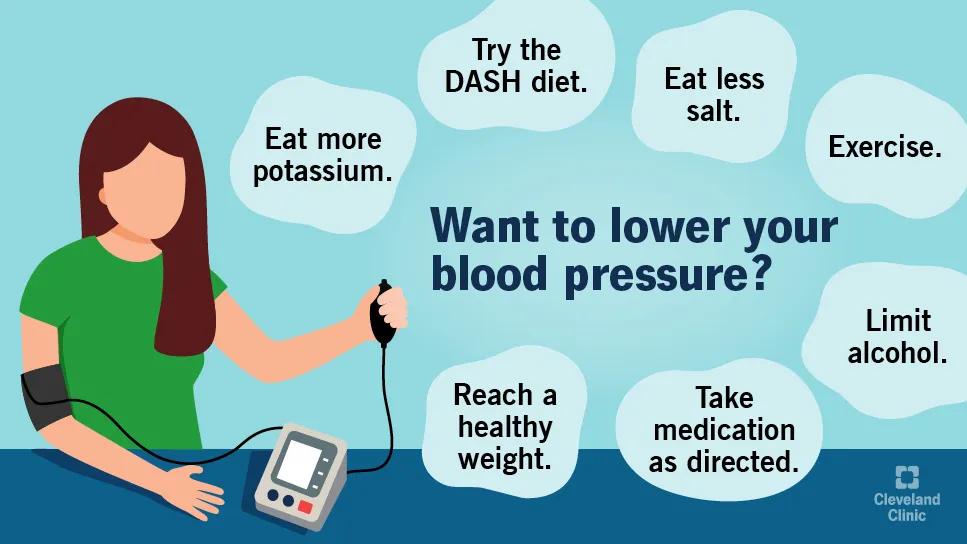
If you’re living with high blood pressure, you’re far from alone.
Advertisement
Cleveland Clinic is a non-profit academic medical center. Advertising on our site helps support our mission. We do not endorse non-Cleveland Clinic products or services. Policy
About half of U.S. adults have high blood pressure (also known as hypertension). That means the top number of their blood pressure reading (systolic blood pressure) is higher than 120 mmHg.
High blood pressure is known as “the silent killer” because it rarely shows symptoms. But if it’s not treated, hypertension can damage your arteries and significantly increase your risk of serious consequences, like heart attack and stroke.
The good news? You can lower your blood pressure and your risk for these life-threatening effects.
A quick internet search will reveal dozens of “quick fixes” to lower your blood pressure. Including claims that specific foods, spices, herbs or vitamins can lower your blood pressure.
While some of that advice could be somewhat effective, the evidence is questionable for a lot of the recommendations you’ll see out in the wild.
“You can probably find a study or two on each of them suggesting they could lower blood pressure. But these have never been robustly studied,” says preventive cardiologist Luke Laffin, MD. “If you’re serious about lowering your blood pressure, choose methods that have stood the test of time.”
Just what are those proven ways to lower blood pressure? Dr. Laffin shares his top recommendations.
Advertisement
There are two avenues to lowering blood pressure: lifestyle changes and medication.
Some people can achieve a healthy blood pressure with lifestyle adjustments alone. But more often, it’s with a combination of healthy lifestyle choices and medication that you’ll see the most benefit.
“Blood pressure management is often 70% lifestyle and 30% medications,” Dr. Laffin states. “If you take blood pressure medication but don’t make lifestyle changes, your medications likely won’t work as effectively.”
That’s important to recognize. A recent Cleveland Clinic Heart Health Survey shows that many Americans aren’t aware of just how much their lifestyle can influence their heart health.
The term “lifestyle changes” might make it seem like you need to overhaul your entire way of living to bring your blood pressure down. But know that even small changes can go a long way. And over time, you can build up to making larger changes.
Here are eight specific recommended ways to lower your blood pressure.
If you’re living with hypertension, watching your salt intake matters. A lot.
“Cutting back on salt is probably the most important way to lower your blood pressure,” Dr. Laffin advises. “In fact, studies show that a low-sodium diet has the same effect as up to two blood pressure medications.”
The American Heart Association (AHA) recommends no more than 1,500 milligrams (mg) of salt per day. That’s about one teaspoon. Compare that to the average American, who consumes 3,500 mg of salt a day. That’s more than double the recommendation.
There may be a happy medium here, though.
“The AHA recommendation is an aspirational goal,” Dr. Laffin notes. “If you can get there without changing your diet radically and being miserable, that’s great. But getting to 2,300 mgs or less can go a long way.”
Start by ditching the saltshaker at the table. And cut back on foods that taste salty, as well as hidden sources of sodium, like:
IMPACT: Lowering your sodium intake to 2,300 mg per day should drop your blood pressure by 2 to 3 mmHg. Limiting your sodium intake to the AHA’s stricter recommendation should drop your blood pressure by 5 or 6 mmHg.
Potassium can help lower your blood pressure. That’s because it gives your kidneys a hand in getting rid of excess sodium. And lower sodium levels mean lower blood pressure.
But there’s a big caveat here: If you have kidney disease, talk with a healthcare professional about your potassium goals. Too much potassium can put extra strain on your kidneys.
Advertisement
A diet that’s high in fast food, processed food, carbohydrates and meat is a diet that’s likely to be low in potassium.
Instead, aim for about 3,000 mg of potassium per day by eating foods high in potassium, like:
IMPACT: If you have high blood pressure, increasing your potassium intake to recommended levels may drop your blood pressure by 4 to 5 mmHg.
The DASH diet — which stands for Dietary Approaches to Stop Hypertension — was created specifically to lower blood pressure.
In fact, it’s now considered one of the most important non-pharmaceutical measures for managing hypertension.
“The DASH diet is a really balanced diet that’s rich in fruits, vegetables and whole grains. And it can be done in combination with a low-sodium diet,” Dr. Laffin shares. “It can be really helpful in lowering your blood pressure, especially when you work with a dietitian or nutritionist to drill down on the basics.”
People who adopt the DASH diet usually meet low-sodium and high-potassium guidelines, and may lose weight, too.
IMPACT: Following the DASH diet can drop systolic pressure up to 11 mmHg in just a few weeks.
Exercise, especially aerobic activity, is incredibly effective in reducing blood pressure. (It comes with a host of other benefits, too.)
Advertisement
It forces your blood vessels to expand and contract, which keeps them flexible. Exercise also increases blood flow and encourages the creation of new blood vessels, among other benefits.
“Being sedentary — meaning you’re not physically active — can increase blood pressure,” Dr. Laffin warns.
If you’re new to exercising, take it slow at first and work your way up. Doing too much too quickly can put you at risk for injury.
Not sure where to start? Ask a healthcare provider, like a primary care physician or exercise physiologist, to help you develop a routine that will work for you.
IMPACT: Doing 150 minutes of aerobic activity a week can lower blood pressure by 5 to 8 mmHg.
Drinking alcohol puts you at risk of developing high blood pressure. And if you’ve already been diagnosed with high blood pressure, alcohol may be making it worse.
Dietary Guidelines for Americans defines “moderate drinking” as two drinks or fewer per day for men and one drink or fewer per day for women. But your height, weight and overall health all play a role in what’s safe for you, so ask a healthcare provider for more personalized insight.
Drinking less isn’t easy for everyone. If you’re having trouble changing your alcohol consumption habits, help is available.
Advertisement
IMPACT: If you have hypertension and regularly drink more alcohol than recommended, scaling back may drop your blood pressure by as much as 4 mmHg.
Dropping even a few pounds can go a long way toward lowering your blood pressure if you’re living with overweight or obesity.
“The fat cells that we get around our mid-section are metabolically active cells,” Dr. Laffin points out. “They secrete all kinds of hormones that raise blood pressure.”
Of course, it’s almost never as simple as, “Just lose weight.” Weight is a nuanced, complex topic, and lots of medical and lifestyle-related factors play a role.
But here’s the thing: If you’re doing your best to follow steps one through five on this list, weight loss is likely to follow — especially if you’re working with your healthcare provider to make sure you’re doing things right.
IMPACT: Every pound lost can result in a drop of 1 mmHg in blood pressure.
For some people, changes to lifestyle alone are enough to lower their blood pressure to a healthy range.
But if your blood pressure is still too high, your provider will likely prescribe medications, like:
IMPACT: Taking your medication as directed (and keeping up those healthy lifestyle changes) can get your blood pressure back to where it should be.
If not, your healthcare provider may recommend changing to a new medication or increasing the dose.
Dr. Laffin adds a few additional recommendations that are important for your health.
There’s less evidence of their direct impact on blood pressure. But they’ll do your overall well-being a world of good. And they can lower your risk for other health complications, too.
Things like changing your diet, exercising and taking medication are long-term adjustments that can bring your blood pressure to a healthy level over time. They’re not quick fixes. And you’ll need to keep up with these healthy habits to keep your high blood pressure managed.
Other times, your blood pressure may spike suddenly. Like in response to stress, anxiety, dehydration or downing that extra energy drink.
A quick uptick in your blood pressure can cause headaches, dizziness or nausea. And if it stays elevated, it can be serious.
If you need to temporarily lower your blood pressure in the moment, Dr. Laffin suggests:
If your blood pressure continues to rise or doesn’t return to normal, seek emergency help.
Learn more about our editorial process.
Advertisement

Moderation is best when consuming caffeinated drinks to avoid unhealthy spikes in BP
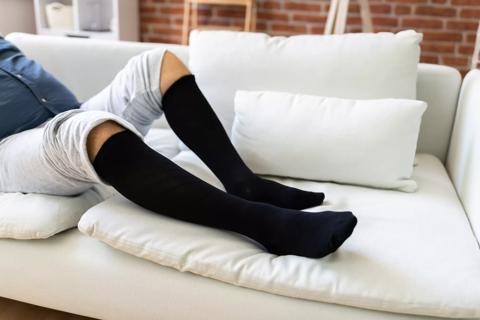
First things first — slowly sit or lie down
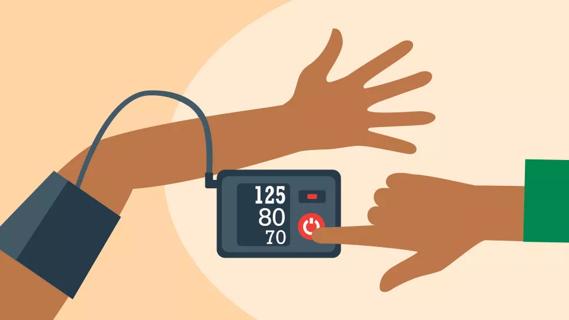
An ideal blood pressure is less than 120 mm Hg systolic and less than 80 mm Hg diastolic
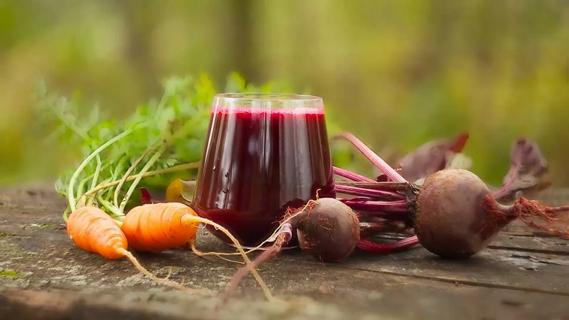
While not magic elixirs, some drinks like beet juice and skim milk may help keep numbers down

Low blood pressure got you feeling down? Staying hydrated and wearing compression socks can help
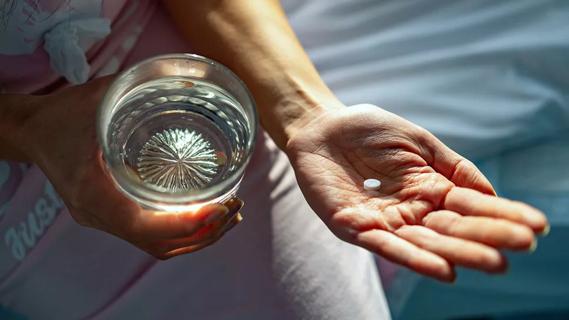
Don’t believe the rumors about aspirin being a magic way to lower BP

Steer clear of bells and whistles — simple, affordable monitors are all you really need

Blood pressure naturally dips when we sleep — and that dipping is crucial for a healthy heart

If you’re feeling short of breath, sleep can be tough — propping yourself up or sleeping on your side may help

If you fear the unknown or find yourself needing reassurance often, you may identify with this attachment style

If you’re looking to boost your gut health, it’s better to get fiber from whole foods